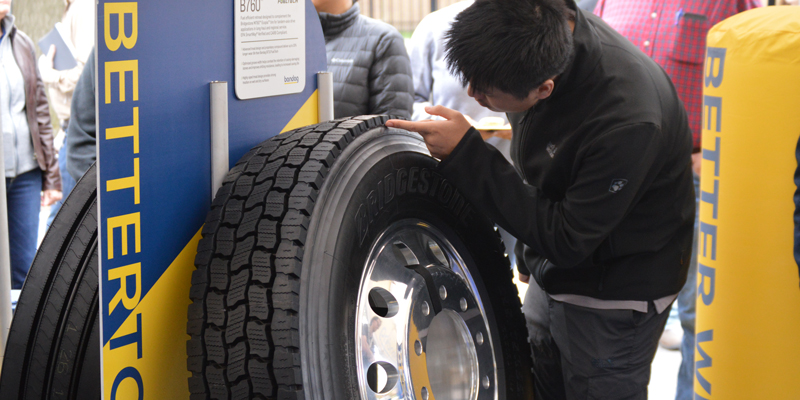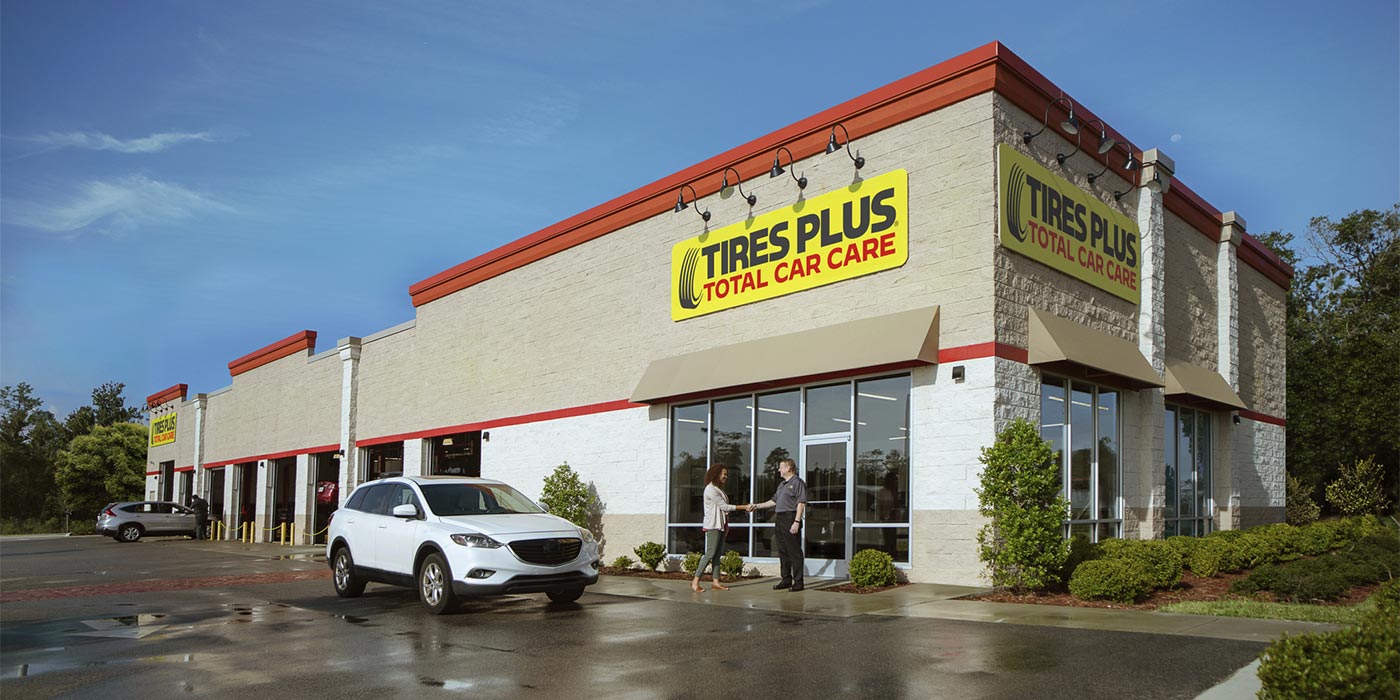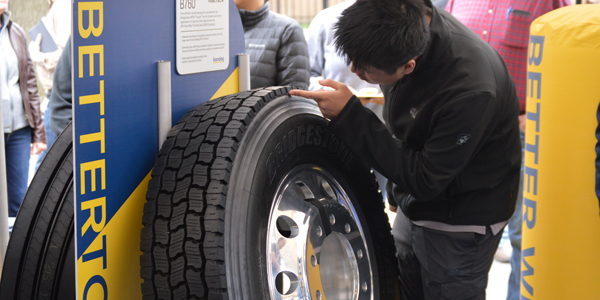
Tire manufacturers are constantly exploring ways to make the retread process more cost effective while increasing productivity. Many retread tire manufacturers still cite long-standing quality and safety misconceptions as the retread industry’s biggest hurdle, but recent advancements in manufacturing technology are helping tire dealers and fleet managers understand the benefits of retreads, specifically in the commercial trucking sector.
At Goodyear Tire & Rubber Co., developing retreads that rival the performance of new tires is one of the top goals for the company’s engineers, according to Dustin Lancy, Goodyear’s regional/urban commercial product marketing manager. He said one way Goodyear accomplishes this is through its UniCircle technology, which gives Goodyear retread tires a seamless design that adheres closely to the tire casing to deliver a precise fit and helps expand the life of the tire casings.
At Bandag, the business of Bridgestone dedicated to retreading, the retreading process starts by taking each tire casing going through a 10-step process to determine if it is even qualified for retreading, according to Clay Timmons, manager of global dealer systems for Bandag, Bridgestone Americas Tire Operations (BATO). Bandag uses a patented, solid-state, non-destructive inspection machine exclusive to Bandag dealers to expose tires to up to 50,000 volts of electricity, which checks for punctures that cannot be seen by the human eye.
Bandag and other retread manufacturers are also focusing their efforts on reducing the chance a tire casing could be damaged during the buffing process, where the old tread rubber is removed from the tire casing before applying the new tread.
“Historically, the buffing step was one in any retread process where the casing could be inadvertently damaged. Bandag now uses a patented belt detection technology that reduces the incidents of buffing into the belt package, which further protects the casing for retreading,” Timmons says.
Central Marketing, which has been a servicing supplier to the retread industry for more than 30 years, has started using what they call a “smart buffer,” which uses a laser camera to profile the tire and determine the correct tread for that casing before moving on and processing that tire.
“The barcode of the tire is scanned, sending the information to the buffer with the tread width that is supposed to go on that tire,” says Edd Burleson, president of Central Marketing. “The laser camera scans the tire and compares that information to the tread that was requested. If the tread fits the tire within the tolerance allowed, then the machine will process the tire, and if not, the machine will display ‘WRONG TREAD SIZE’ for that casing.”
Burleson says this means the operator only needs to mount the tire and scan the barcode and the machine will take it from there, helping ensure quality standards for every tire processed.
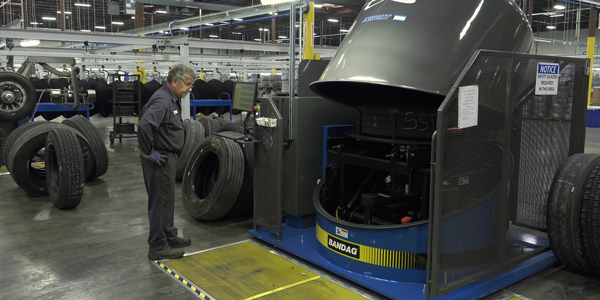
Looking to the not-so-distant future, Burleson says within five years, each machine in a retread plant will be digitally connected, allowing data to follow a specific tire throughout the entire process. He gave examples: Each incoming tire will have a barcode laser engraved, giving dealers and the manufacturer the ability to retrieve data throughout the life of the tire. This will include files like a digital, 3-D-mapped image of the retreaded tire showing details on every part of the process, like from the tire’s shearography, a process which uses laser technology to test and measure the distance of motion of a separation or trapped air in a casing and identifies unseen damage within that casing.
Even data on the tire’s final inspection will be stored, Burleson adds, during which cameras will be used to check for inflation pressure, bulges and runout.
“These records can be kept so when the tires come back for the next retread cycle, the original files can be brought up to compare with the tire,” Burleson says.
David Stevens, managing director of the Tire Retread & Repair Information Bureau (TRIB), says within that same timeframe he sees this intelligent collection and management of retread tire data being used well beyond the retread plant, as those digital files could even include data from the initial manufacturer, usage on the road and repair information.
“More and better data could have positive impacts on logistics, demand planning, inspection, etc.,” Stevens says.
Goodyear’s Lancy says he foresees advancements on the horizon for retread technology in areas like rolling resistance and fuel efficiency as the company continues to develop retreads with tread designs and patterns that closely mimic that of new tire performance.
“Advancements that have lowered the rolling resistance on retreads can help commercial fleets save money at the fuel pump,” Lancy says. “These same innovations also position Goodyear well for new regulations on retreads that could be rolled out, similar to the Green House Gas (GHG 2) Regulations calling for increased fuel efficiency on new commercial vehicles starting in 2021.”
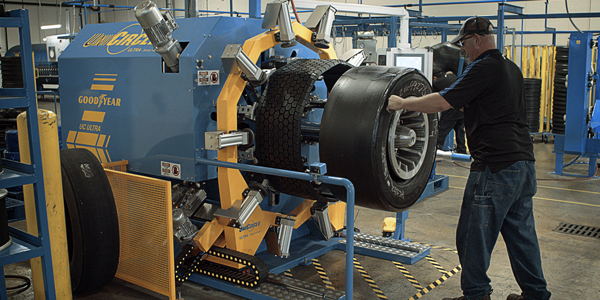
Jumping the Hurdle
While many drivers still believe that the rubber strips commonly found on America’s highways, also known as “road gators,” are retreaded tires that have fallen apart because those tires fail at a higher rate than new tires, studies show this is a fallacy.
Lancy cites a 2009 study on retreaded tire use and safety by the Arizona Department of Transportation which found that the most common causes of tire failure in both new and retreaded tires are under-inflation and damage due to roadway hazard and debris.
“Educating customers that our retreaded tires can be safe, dependable and less costly than new tires is our primary focus in overcoming industry objections to the use of retreads,” says Lancy. “Through frequent and ongoing communication about the quality measures built into our manufacturing process, we seek to reshape perceptions and make our customers understand that our retread process is just as exacting as the new tire manufacturing process: Used tires are thoroughly inspected to confirm the integrity of the casing before the new treads are bonded to the tire body using a process similar to the new tire manufacturing process.”
Like Lancy, Stevens says the industry’s best bet for busting retread myths lies in customer education opportunities.
“Two things can help: First, nothing convinces a potential new user to try retreading better than going through a retread plant tour so they can see for themselves the multiple inspection procedures, quality controls and technologically-sophisticated process that retreading entails. Second, they need to try the product for themselves and test it side by side with current tire selections to see for themselves the savings, performance and reliability they will get from a retreaded tire,” Stevens says.
Earlier this year, Bridgestone launched its “Bandag Fleets We Depend On” Roadshow to help dispel some of the most common retread fallacies among fleet owners and operators. The campaign, which made its final stop in July, traveled to 27 locations in the U.S. and featured interactive exhibits allowing guests to compete in a retread knowledge quiz game, demonstrations and customer testimonials.
LaTres Jarrett, director of marketing for Bandag, BATO, says she’s found that misconceptions about retread performance, safety and reliability aren’t as common in the commercial world as they once were, and she is “slowly seeing mindsets change in the industry,” at least among certain fleet segments.
“In fact, up to 90% of large fleets are retreading today, and they recognize that retreading is a smart business practice, contributing to the approximate 15 million commercial tires that are retreaded each year in the U.S. and Canada,” she says.
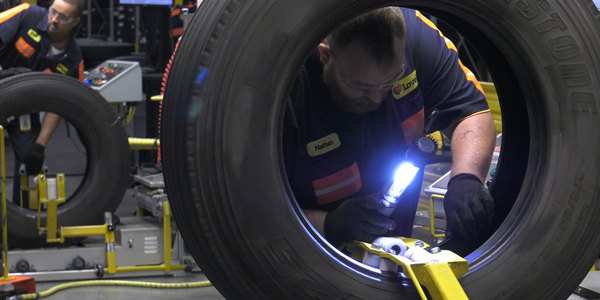
Rethinking Policies and Standards
Stevens says TRIB is not in favor of increased U.S. government involvement in the retread manufacturing process, as manufacturers already adhere to high-quality standards, industry-recommended practices and multiple quality inspection points.
However, there are a number of ways the government can better support the industry, he says.
“Due to the environmental and economic benefits of retreading, we would like to see federal, state and local governments encourage increased adoption of retreading by first ensuring retreading is a required consideration in any RFP or bidding process,” Stevens says. “Second, by putting in place financial incentives (tax breaks, refunds, etc.) to encourage adoption of retreading. Third, by setting up a system for carbon tax credits for users of retreaded tires based upon the amount of carbon emissions they are saving, and fourth, by setting standards for imported truck and bus tires to ensure they can be retreaded instead of used only once and then entering the waste stream.”
Burleson added a great way the government can help the retread industry move the needle isn’t necessarily through legislation, but instead by setting an example and using more retreads with its own fleets.
“[The government has] done a great job [using retreads with] the postal service and I would like to see this expand to other areas,” Burleson says.
For more on this topic, check out Is the Steer Position Safe for Retreads?
Check out the rest of the September digital edition of Tire Review here.

